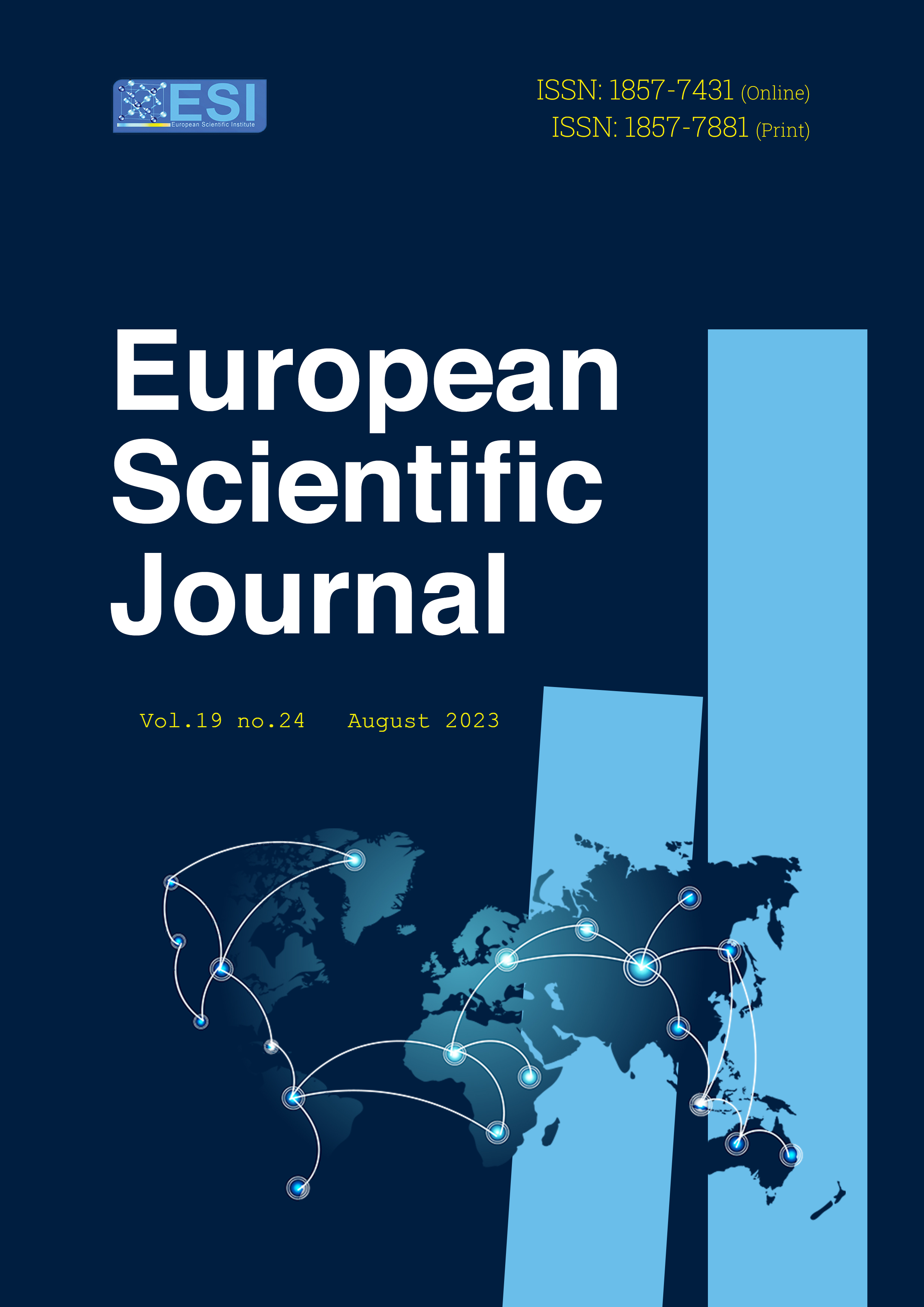Cancer de la Prostate Révélé par un Myélogramme Pathologique: A Propos d’Un Cas
Abstract
La majorité des cancers de la prostate sont diagnostiqués à un stade tardif en Afrique subsaharienne. Les complications hématologiques du cancer de la prostate surviennent au cours d’une évolution péjorative. Nous rapportons un cas révélé par une complication hématologique. Un patient de 70 ans a présenté une bicytopénie. Il avait des antécédents de myocardiopathie et de polytransfusion. Il a été admis en hématologie pour recherche étiologique d’une bicytopénie sévère. La réalisation d’un myélogramme à visée de recherche étiologique a identifié des cellules métastatiques d’origine prostatique. L’examen anatomopathologie des carottes de biopsie prostatique a révélé un adénocarcinome prostatique infiltrant, score de Gleason 7 (4 + 3), ISUP (International Society of Urological Pathologie) 3. L’hormonothérapie et les transfusions sanguines associées aux bisphosphonates ont constitué l’essentiel du traitement. L’évolution sous ce traitement a été favorable sur le plan clinique avec une amélioration de l’état général et biologique avec une normalisation de la lignée rouge à 3mois de traitement et un PSA (Prostate Specific Antigen) au nadir après 6mois de traitement. Les complications hématologiques de la néoplasie prostatique notamment dues à l’envahissement médullaire sont source d’égarement diagnostique. Elles méritent d’être connues des cliniciens puisqu’elles peuvent être révélatrices de ce cancer au stade métastatique.
The majority of prostate cancers are diagnosed at a late stage in sub-Saharan Africa. The haematological complications of prostate cancer occur during a pejorative course. We report a case revealed by a haematological complication. A 70-year-old patient presented with bicytopenia. He had a history of cardiomyopathy and polytransfusion. He was admitted to hematology for a etiological investigation of severe bicytopenia. Performing a myelogram for etiological research identified metastatic cells of prostate origin. The pathology examination of the prostate biopsy cores revealed an infiltrating prostatic adenocarcinoma, Gleason score 7 (4 + 3), ISUP (International Society of Urological Pathology) 3. Hormontherapy and blood transfusions associated with bisphosphonates were the factor essential of treatment. The outcome under this treatment was clinically favorable with an improvement in the general and biological condition with normalization of the red line at 3 months of treatment and a PSA (Prostate Specific Antigen) at nadir after 6 months of treatment. The haematological complications of prostatic neoplasia, in particular due to spinal cord invasion, are a source of diagnostic error. They deserve to be known to clinicians since they can be indicative of this cancer in the metastatic stage.
Downloads
Metrics
PlumX Statistics
References
2. Betsch, D. M., Gray, S. MD, & Zed, S. E. MD. (2017). A case of metastatic prostate cancer and immune thrombocytopenia. CurrOncol, 24(5), e434–e436. https://doi.org/10.3747/co.24.3592
3. Buyukberber, S., Aydogdu, I., Ozen, S., Sevinc, A., & Sari, R.. (2001). Metastatic bone marrow tumours: A report of six cases and review of the litterature. Haematologia, 31(3), 215–223. https://doi.org/10.1163/15685590152763755
4. Chauhan, K., Jain, M., Grover, S., Shukla, P., Rusia, U., & Grover, R. K. (2016). Bone marrow metastasis in nonhematologic malignancies. Data from a cancer hospital. Clin Cancer Iinvesting J, 5 : 103–9. https://doi.org/10.4103/2278-0513.177131
5. Jalali, K., Chautard, D., Racineux, P., Pabot, D., & Chatelard, P. (2004). Métastases dans la moelle épinière d’un cancer de la prostate. Prog Urol, 14, 554–557.
6. Kaur, G., Basu, S., Kaur, P., Sood, T. (2011). Metastatic bone marrow tumors: Study of nine cases and review of the literature. Journal of Blood Disorders & Transfusion,2(3):1-3. https://doi.org/10.4172/2155-9864.1000110
7. Lizee, D., Ouzzne, A., Villers, A. (2012). Cancer de la prostate : Diagnostic et bilan d’extension. EMC Urologie, 5(2), 1–8. https://doi.org/10.1016/S1762-0953(12)58452-9
8. Minato, N., Takada, T., Koga, M., & Sugao, H. (2012). Prostate cancer with disseminated carcinomatosis of bone marrow initially presenting with disseminated intravascular coagulation syndrome : A case report. Hinyokika Kiyo, 58(5), 249–253. http://hdl.handle.net/2433/157950
9. Nieder, C., Haukland, E., Pawinski, A., & Dalhaug, A. (2010). Anaemia and thrombocytopenia in patients with prostate cancer and borne metastases. BMC Cancer, 10(284), 2–6.
10. Pedio, G., Rüttner, J. R., Odermatt, B., & Gut, D. (1974). Oncogenic viruses in the thrombocytopenic stage of experimental hipa–plasmacytoma. Experientia, 30(3), 289–291. https://doi.org/10.1007/BF01934833
11. Rigaud, J., Le Normand, L., Karam, G., Glemain, P., Buzelin, J. M., & Bouchot, O. (2002). Facteurs pronostiques du cancer de la prostate traité par hormonothérapie de première intention. Prog Urol, 12(2), 232–239.
12. Rozet, F., Hennequin, C., & Beauval, J..-B, Beuzeboc P. (2018). Cormier L, Fromont—H ankard P, Mongiat-Artus, Ploussard G. Recommandation française du Comité de Cancéeologie de l’AFU – actualisation 2018-2020 : cancer de la prostate. Prog Urol, 28, R81–R132.
13. Ruffion, A. (2016). Collège français des urologues (3ème édition). Elsévier MASSON.
14. Salomon, L., Bastide, C., Beuzeboc, P., Cormier, L., Fromont, G., Hennequin, C., Mongiat-Artus, P., Peyromaure, M., Ploussard, G., Renard-Penna, R., Rozet, F., Azria, D., Coloby, P., Molinié, V., Ravery, V., Rebillard, X., Richaud, P., Villers, A., Soulié, M., & Les membres du CCAFU. (2013). CCAFU Recommendations 2013 : Prostate cancer. Prog Urol, 23 Suppl. 2, S69–S101. https://doi.org/10.1016/S1166-7087(13)70048-4
15. Spivack, M., Brenner, S. M., Markham, M. J., Snyder, E. L., & Berkowitz, D. (1979). Presumed immune thrombocytopenia and carcinoma: Report of three cases and review of the literature. American Journal of the Medical Sciences, 278(2), 153–156. https://doi.org/10.1097/00000441-197909000-00007
Copyright (c) 2023 Anne Stredy Mkoh Dikao, Michel Michael Agounkpe, Jules Bruno Djiepti, Roland Milolo Sance, Magloire Yévi, Fred Hodonou, Justin Dehoumon, Josue Dejinnin Georges Avakoudjo

This work is licensed under a Creative Commons Attribution 4.0 International License.








